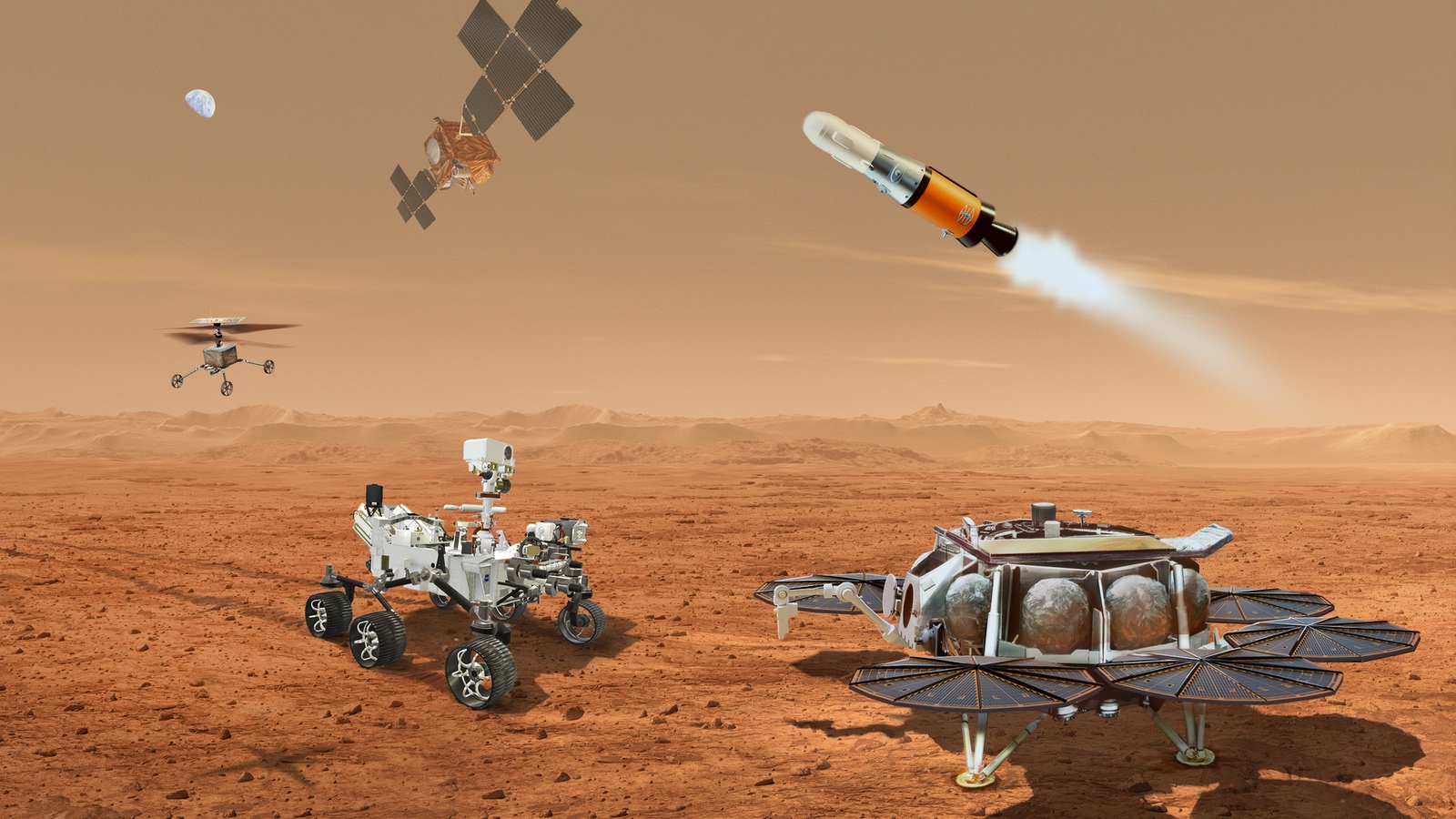WASHINGTON — NASA has confirmed that one scenario for the cost of its Mars Sample Return (MSR) program is far higher than previous estimates, heightening concerns among scientists about its impacts on other missions.
In a June 26 statement to SpaceNews, NASA said that one “highly speculative” estimate for the full cost of MSR was in the range of $8 billion to $9 billion. An independent review in 2020 estimated the cost of MSR at $3.8 billion to $4.4 billion, which itself was a significant increase over earlier estimates. Ars Technica first reported on the higher cost estimate for MSR June 23.
“NASA evaluates a wide range of funding scenarios every year for its portfolio of missions as part of its annual budget process. Missions in formulation, such as Mars Sample Return, have more variables to consider, providing for a greater range of scenarios to evaluate — all scenarios are highly speculative,” the agency stated. “One included a lifecycle cost range of $8–9 billion, which included launch, operation, and closeout cost estimates.”
NASA officials have been careful not to give any estimates of costs for MSR in recent presentations, stating that it will wait until a formal confirmation review for the program, scheduled for the fall, before providing an official cost and schedule baseline. That will come after a series of preliminary design reviews and a review by a second independent board led by Orlando Figueroa, a former director of NASA’s Mars exploration program.
“We’re taking a very deliberate approach to confirmation. We’re trying to go back and make sure that we’ve put scrutiny on all of our technical plans and we’ve gotten scrutiny on the associated cost and schedule,” Jeff Gramling, MSR program director at NASA Headquarters, said in a June 7 presentation at a meeting of the National Academies’ Space Studies Board and Aeronautics and Space Engineering Board.
He called NASA’s decision to convene a second independent review before confirmation “unprecedented” and a sign of the emphasis the agency was putting on keeping MSR on track. “We’re taking this very seriously and we’re trying to make sure we have solid plans before we go to confirmation.”
However, even before this estimate there were warning signs about cost growth on MSR. “Mars Sample Return costs are expected to increase beyond what is shown in the outyear profile in this budget,” the agency stated in its fiscal year 2024 budget request, which seeks $949.3 million for MSR. That budget proposal paused work on a heliophysics mission, the Geospace Dynamics Constellation, citing the “high budgetary requirements” of other missions like MSR.
NASA Administrator Bill Nelson, testifying before Senate appropriators in April, said he had been informed during a recent visit to the Jet Propulsion Laboratory, the lead center for MSR, that the program would need an additional $250 million in both the current fiscal year and in 2024. Other NASA officials have declined to confirm that budget increase.
MSR cost growth was also a topic at a recent meeting of NASA’s Planetary Science Advisory Committee, or PAC, a group of scientists that advises the agency on its planetary science initiatives. While not discussing specific figures, like the cost estimate of up to $9 billion, members were clearly concerned about the effects of any MSR cost growth on the overall portfolio of missions.
“I get it that everybody is anxious about this. We’re all anxious about it,” said Lori Glaze, director of NASA’s planetary science division, during a June 23 discussion with committee members, who were considering a recommendation regarding potential MSR cost growth.
“We have existing policies and processes in place” if the costs of MSR do grow, particularly after its confirmation review, she said. However, there may be few options other than accept the cost increase or cancel MSR entirely.
“There are not really any significant descopes available to us here,” Gramling said at the National Academies meeting, meaning things that could be dropped from the mission while allow it to achieve its overall goal. One option, he said, would be to remove one of two helicopters that would pick up cached samples is Perseverance is not able to deliver samples directly to the Sample Retrieval Lander. That would likely not significantly change the cost of the overall MSR program.
“NASA understands the importance of balancing science research, including objectives supported by the National Academies’ decadal survey, with fiscal responsibilities,” the agency said in its statement about the new cost estimate. The latest planetary science decadal survey endorsed MSR as a top priority among large missions, but recommended that NASA keep the cost of MSR to no more than 35% of the overall planetary science budget in any fiscal year.
“It’s a good rule,” Glaze said of that 35% recommendation at the June 23 PAC meeting. “I support it.”
